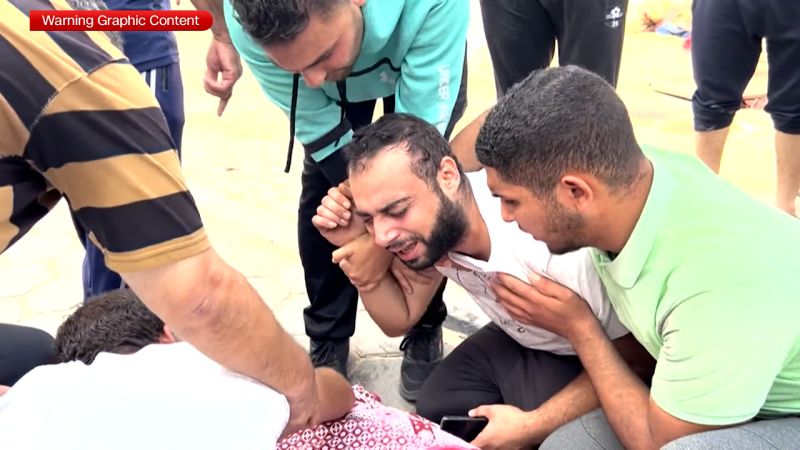The health ministry in Hamas-controlled Gaza has published a report listing the names of more than 6,000 “documented deaths” in Gaza since the October 7 terror attacks on Israel, after US President Joe Biden questioned the reliability of Palestinian casualty figures.
The report stated that between October 7 and 26, 7,028 Palestinians were killed, including 2,913 children, and blamed the deaths on Israeli military “aggression.” It said a further 281 bodies had not yet been identified.
The ministry said the actual number of dead is likely to be much higher than stated in the report. The list of 6,747 names gives the sex, age and identity card number of each of the victims – an apparent effort to bolster the credibility of its data in the face of challenges from the US and Israel.
On Wednesday, Biden said he had “no confidence” in the ministry’s casualty figures. On Thursday, White House spokesman John Kirby called the ministry “a front for Hamas,” though when asked he did not dispute that thousands of Palestinians, including many innocent civilians, had been killed.
The dispute highlights the complexities in reporting the number of deaths in Gaza. Numbers of casualties for the besieged enclave are released daily, both by the ministry in Gaza and by the Palestinian Authority in Ramallah in the West Bank.
The Palestinian Authority is run by a rival faction to Hamas, though the umbrella Ministry of Health maintains a relationship with the ministry in Gaza.
The Prime Minister of the Palestinian Authority, Mohammad Shtayyeh, criticized Biden’s remarks, saying his health authority in the West Bank believed the Gaza numbers to be accurate.
“There are certain leaders who don’t want to see reality. They only want to see what is happening on the Israeli side. They don’t want to see what is happening on the Palestinian side,” he said in an interview Thursday with Al Jazeera.
“The numbers are correct,” he added. “They are our numbers. These numbers are fed to us from the hospitals of Gaza every single day that are received by our Ministry of Health.”
Last week Michael Ryan, the executive director of WHO’s health emergencies programme, told reporters: “We believe that the numbers being reported in Israel and in the occupied Palestinian territories… may not be perfectly accurate on a minute-to-minute basis but they grossly reflect the level of death and injury on both sides of that conflict.”
Numbers provided by the Gaza health ministry have not historically been controversial and have been cited in reports by the US State Department without caveats over their accuracy.
But the current conflict has drawn closer attention onto international reliance on the figures, and conflicting claims over the number of people who died in the explosion at al-Ahli Arab Hospital in Gaza City on October 17 have deepened the dispute. The ministry put the final tally at 471. An initial US intelligence assessment was that between 100 and 300 were likely killed in the blast. Other analysts have said the number could be significantly lower, in double figures, based on the size of the impact crater at the site.
Kirby noted that the ministry initially reported 500 people had died in what it claimed was an Israeli air strike.
“So, we know that’s not true, and we’ve now since found out that the numbers aren’t that high, either,” he said. “They haven’t gotten up to 500 – now it was it was at least a couple of hundred, and that’s terrible, and that’s atrocious, and that’s sad, and we all obviously grieve with the families and loved ones who are affected by that, but the numbers are not reliable.”
The Israeli military has similarly expressed doubts about the casualty numbers being reported out of Gaza, but has not provided evidence that they are exaggerated.
Thursday’s report from Gaza said it excludes those buried without being brought to hospital, those for whom hospitals were unable to complete registration procedures, and people missing under the rubble, who number around 1,600, with many of them feared dead.

